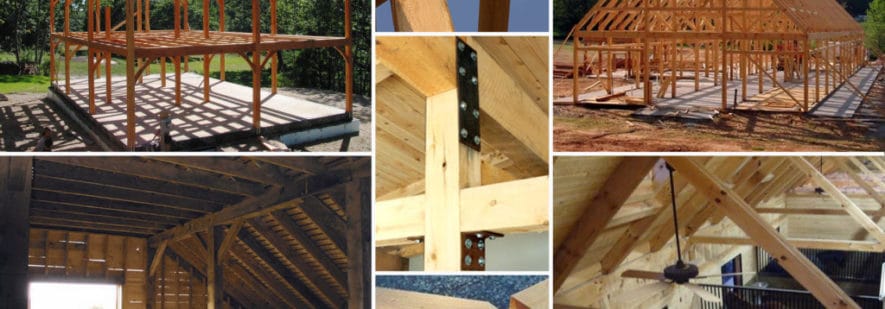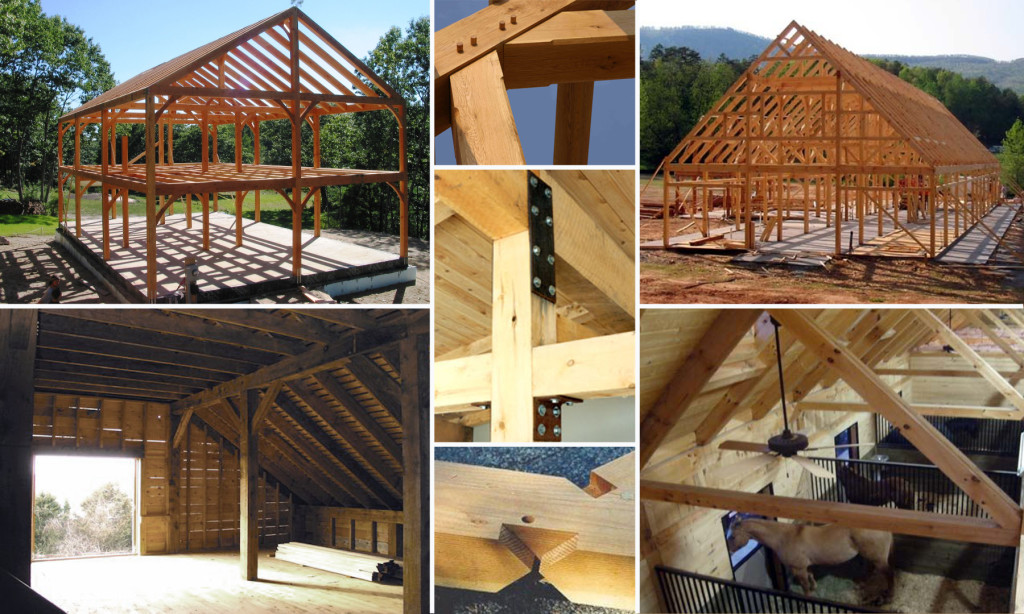Archiscape Blog

Structure & Materials: Post & Beam
Photos from New England Timber Works and Vermont Timber Works
Post and beam, post and lintel or a trabeated system refers to the use of horizontal beams or lintels which are borne up by columns or posts. The name is from the Latin trabs, beam.
The trabeated system is a fundamental principle of Neolithic, Ancient Greek and Ancient Egyptian architecture. Other trabeated styles are the Persian, Lycian, nearly all the Indian, Chinese and Japanese styles; and in South and Central America, Mayan architecture and Inca architecture.
In North America, post and beam construction was brought from England, Holland and France, and was used for forts, houses and barns, using local materials. Today, the most common wood species used are Douglas Fir, Western Red Cedar, Eastern White Pine, Eastern Hemlock, Red Oak and Southern Yellow Pine.
Beautiful detailing and the simplicity of the exposed wood are qualities that people enjoy in post and beam building. Today, beyond the barns that are the most iconic, there are examples of new post and beam buildings for living, working and gathering.
RESIDENTIAL
Where post and beam used to be a utilitarian choice, now houses are being built using traditional techniques, to create warmth and intimacy. Using a single or several bays, houses can be flexible and open or compartmented and cozy.
RELIGIOUS
Post and beam construction lends itself well to open spaces, using larger timbers and multiple bays. The beams, traditionally straight members with diagonals at each end, gave way to truly arched forms and trusses, as shown in some of the images above.
CULTURAL
Other public spaces such as museums, libraries, small theaters, wineries, anywhere people gather, are enhanced by the framing of natural wood. Here, you can see the post and beam as well as trussed systems.
/
Click here to view a Modern Barn Raising at the site of one of our own Post and Beam projects!
“Beauty of style and harmony and grace and good rhythm depend on simplicity.”
Plato
A bientôt,
Karin
/
/
/
Information from Wikipedia





